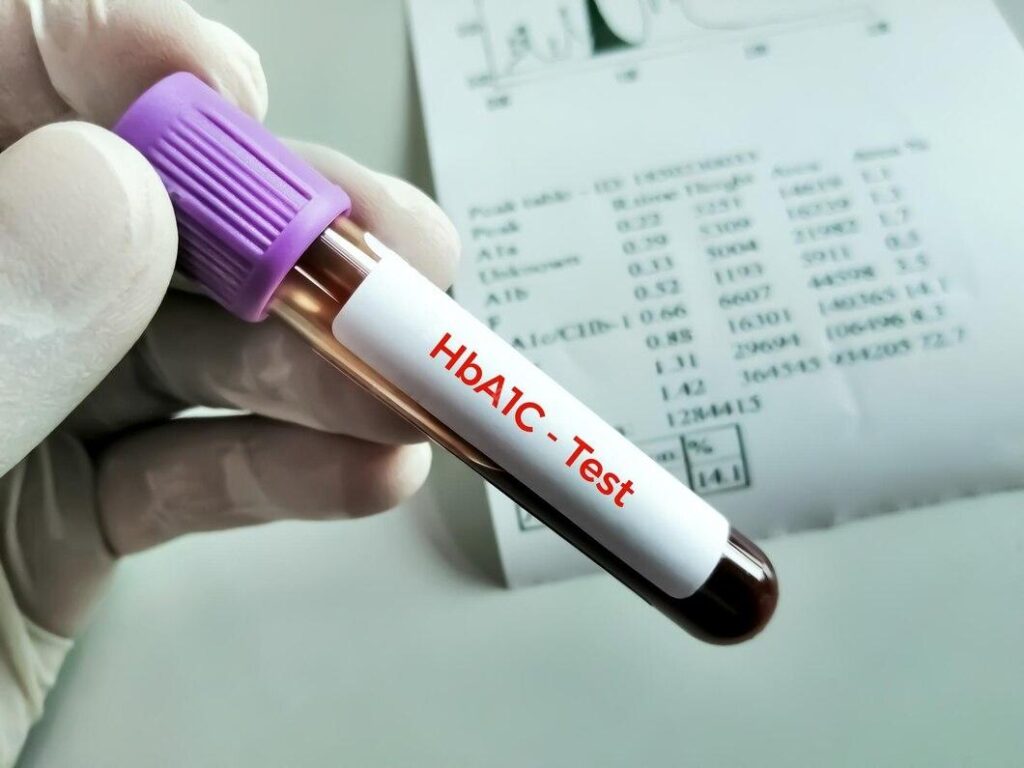Quadriple marker Test ;

Pregnancy is an incredible journey filled with excitement and anticipation, but it also comes with its share of concerns and questions. One important aspect of prenatal care is screening for various conditions that could affect both the mother and the baby. One such screening tool used during pregnancy is the quad screen, also known as the quadruple marker test or quad test.
What is the Quadriple marker Test Screen?
The quad screen is a prenatal screening test that measures the levels of four substances in a pregnant woman’s blood:
- Alpha-fetoprotein (AFP): Produced by the baby’s liver, AFP levels can indicate the risk of neural tube defects such as spina bifida.
- Human chorionic gonadotropin (hCG): This hormone is produced by the placenta and can indicate the risk of chromosomal abnormalities, such as Down syndrome.
- Estriol: Estriol is a hormone produced by both the baby and the placenta, and abnormal levels may suggest the risk of chromosomal abnormalities or certain pregnancy complications.
- Inhibin A: Produced by the placenta, abnormal levels of inhibin A can indicate the risk of Down syndrome and other chromosomal abnormalities.
Significance of Quad Screen
The quad screen is not diagnostic but rather a screening tool used to assess the risk of certain chromosomal abnormalities and neural tube defects. It provides valuable information that can help healthcare providers determine whether further diagnostic testing, such as amniocentesis or chorionic villus sampling (CVS), is warranted.
Indications for Quadriple Marker Test:
The quadriple marker test, also known as the quad screen or quadruple marker test, is a valuable tool in prenatal care used to assess the risk of certain fetal abnormalities. Healthcare providers may recommend the quadriple marker test for various indications, including:
- Advanced Maternal Age: Women who are 35 years old or older at the time of delivery are at an increased risk of having a baby with chromosomal abnormalities such as Down syndrome. The quadriple marker test can help assess this risk.
- Previous Pregnancy with Chromosomal Abnormality: Women who have previously had a pregnancy affected by chromosomal abnormalities may be advised to undergo the quadriple marker test to assess the risk in subsequent pregnancies.
- Abnormal First Trimester Screening Results: If the results of first-trimester screening tests, such as the nuchal translucency (NT) scan or the combined test (NT scan plus blood tests), indicate an increased risk of chromosomal abnormalities, further testing with the quadriple marker test may be recommended.
- Family History of Genetic Disorders: Individuals with a family history of genetic disorders or chromosomal abnormalities may opt for the quadriple marker test to assess the risk of these conditions in the current pregnancy.
- Previous Pregnancy Complications: Women who have experienced previous pregnancy complications, such as stillbirth, miscarriage, or neural tube defects, may undergo the quadriple marker test to screen for similar issues in subsequent pregnancies.
- Personal Choice: Some pregnant individuals may opt for the quadriple marker test as part of routine prenatal care, even in the absence of specific risk factors, to gather additional information about the health of the fetus.
- Uncertain Dating of Pregnancy: In cases where the gestational age of the pregnancy is uncertain, the quadriple marker test may be recommended as part of comprehensive prenatal screening to assess the risk of fetal abnormalities.
- Amniocentesis or CVS Refusal: Women who decline invasive diagnostic tests such as amniocentesis or chorionic villus sampling (CVS) but still wish to assess the risk of chromosomal abnormalities may opt for the quadriple marker test as a non-invasive screening option.
What Quadriple Marker Test is done for?
Diseases screened:
The quadriple marker test screens for the following fetal abnormalities:
- Down Syndrome (Trisomy 21): A chromosomal abnormality characterized by an extra copy of chromosome 21, resulting in developmental delays, intellectual disabilities, and certain physical features.
- Trisomy 18 (Edwards Syndrome): A chromosomal abnormality involving an extra copy of chromosome 18, which can cause severe developmental delays, organ malformations, and a high rate of mortality in infancy.
- Open Neural Tube Defects (ONTDs): Neural tube defects such as spina bifida and anencephaly, which occur when the neural tube fails to close properly during fetal development, leading to spinal cord and brain abnormalities.
- Abdominal Wall Defects: Certain conditions such as gastroschisis and omphalocele, which involve defects in the development of the abdominal wall and may result in protrusion of abdominal organs outside the body.
The quadriple marker test helps identify pregnancies at increased risk of these conditions, allowing for timely interventions, further diagnostic testing, and appropriate prenatal care.
Interpreting Quadriple marker Test Results
Understanding the results of the quad screen requires careful consideration and interpretation by healthcare professionals. Here’s what the results may indicate:
- Normal Results: A normal quad screen result indicates that the likelihood of the baby having certain chromosomal abnormalities or neural tube defects is low. However, it does not guarantee that the baby will be born without any health issues.
- Abnormal Results: Abnormal quad screen results do not necessarily mean that the baby has a chromosomal abnormality or neural tube defect. Instead, they indicate an increased risk, and further diagnostic testing is usually recommended to confirm or rule out any concerns.
Transitioning to Further Testing
If the quad screen results are abnormal or indicate an increased risk, healthcare providers may recommend additional testing, such as:
- Amniocentesis: This procedure involves collecting a sample of amniotic fluid to analyze the baby’s chromosomes for abnormalities.
- Chorionic Villus Sampling (CVS): CVS involves collecting a sample of cells from the placenta to assess the baby’s chromosomes for abnormalities.
Conclusion
The quad screen is a valuable tool in prenatal care, providing important information about the health of both the mother and the baby. While it cannot provide a definitive diagnosis, it helps identify pregnancies that may be at increased risk for certain chromosomal abnormalities and neural tube defects. Understanding the results of the quad screen and following up with appropriate further testing can help ensure the best possible outcome for both mother and baby.
Frequently Asked Questions (FAQs) on Quadriple Marker Test
1. What is the quadruple marker test for?
- The quadruple marker test, also known as the quad screen, is a prenatal screening test used to assess the risk of certain chromosomal abnormalities and neural tube defects in the fetus. It measures the levels of four substances in the pregnant woman’s blood: Alpha-fetoprotein (AFP), Human chorionic gonadotropin (hCG), Estriol, and Inhibin A.
2. What happens if a quadruple test is positive?
- A positive quadruple marker test indicates an increased risk of chromosomal abnormalities or neural tube defects in the fetus. However, it does not provide a definitive diagnosis. Further diagnostic testing, such as amniocentesis or chorionic villus sampling (CVS), may be recommended to confirm or rule out any concerns.
3. Which is better double marker or quadruple test?
- The choice between the double marker test and the quadruple marker test depends on various factors, including the healthcare provider’s recommendation, the specific risk factors of the pregnancy, and the availability of testing facilities. Both tests have their own advantages and limitations, and the decision should be made in consultation with a healthcare professional.
4. Can I skip quadruple marker test?
- While the quadruple marker test is not mandatory, it is recommended as part of routine prenatal care to assess the risk of certain fetal abnormalities. Skipping the test may mean missing out on valuable information that could help identify potential health concerns for both the mother and the baby.
5. What is the cost of quad test?
- The cost of the quad test may vary depending on factors such as the healthcare provider, location, and insurance coverage. It is advisable to check with the healthcare provider or the testing facility for specific pricing information.
6. What is the cost of quadruple test?
- The cost of the quadruple test may vary depending on factors such as the healthcare provider, location, and insurance coverage. It is advisable to check with the healthcare provider or the testing facility for specific pricing information.
7. Is quadruple test compulsory?
- The quadruple test is not compulsory, but it is commonly recommended as part of routine prenatal care to assess the risk of certain fetal abnormalities. However, the decision to undergo the test ultimately rests with the pregnant individual and should be made in consultation with a healthcare professional.
8. What time period is quadruple test?
- The quadruple test is typically performed between weeks 15 and 20 of pregnancy, although the exact timing may vary depending on individual circumstances and healthcare provider recommendations.
9. Which is better triple marker or quadruple marker test?
- Both the triple marker test and the quadruple marker test serve similar purposes in assessing the risk of certain chromosomal abnormalities and neural tube defects in the fetus. The choice between the two tests may depend on various factors such as availability, healthcare provider recommendation, and individual preferences.
10. What is a normal quadruple marker report?
– A normal quadruple marker report indicates that the levels of the four substances measured (Alpha-fetoprotein, Human chorionic gonadotropin, Estriol, and Inhibin A) fall within the expected range for the stage of pregnancy. However, it is important to note that a normal result does not guarantee the absence of fetal abnormalities.
11. What if an NT scan is normal but a double marker is positive?
– A normal nuchal translucency (NT) scan combined with a positive double marker test result may indicate an increased risk of certain fetal abnormalities. Further diagnostic testing, such as amniocentesis or chorionic villus sampling (CVS), may be recommended to confirm or rule out any concerns.
12. When to do an NT scan?
– An NT scan, also known as nuchal translucency scan, is typically performed between weeks 11 and 14 of pregnancy. It is used to assess the risk of chromosomal abnormalities, particularly Down syndrome, by measuring the thickness of the fluid-filled space at the back of the baby’s neck.
Read more:


Very informative. And it will be definitely helpful for the pregnant ladies to get there doubts cleared. Share more information like this.